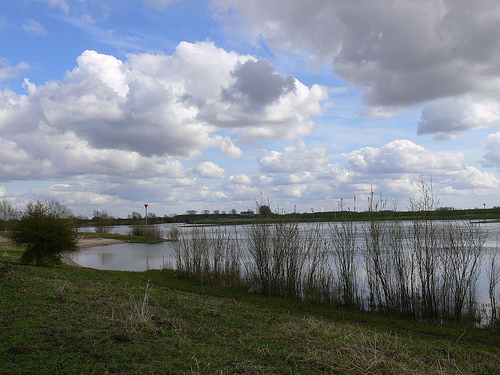PFAS found above limits in water bodies in NL and Europe
Claudia Delpero
Many rivers, lakes and coastal waters in the Netherlands and across Europe are contaminated with so-called ‘forever chemicals’ that often exceed the limits set in EU law, an analysis by the European Environment Agency (EEA) has shown.
PFAS (per- and polyfluoroalkyl substances) are a group of man-made chemicals used in cookware, textiles, cosmetics, pesticides, electronics and many other goods. They are highly mobile and persistent into the environment, hence the name ‘forever chemicals’. They are also known to cause cancer and affect fertility.
PFOS (perfluorooctane sulfonate), part of the PFAS family, is widespread in European waters, despite being banned in the EU for more than 10 years, the EEA said, after compiling data provided by national authorities.
Of 14 countries that provided data for PFOS in surface water, Belgium, France and Iceland reported 100% of water bodies exceeded the average annual limit set in the EU law. In the Netherlands, the proportion was 96%.
In Germany, 83% of monitored sites exceeded the standard, in Italy 54%, while Spain, Ireland, Poland, Croatia and Estonia reported less than 20%, and Bulgaria and Latvia none.
Of the 1,300 monitoring sites in 2022 across the EU, 59% of rivers, 35% of lakes, and 73% of coastal waters exceeded the PFOS limits.
The EEA, however, says there are “gaps in the reported data” and comparisons are difficult because the number of monitoring sites differs and “it is the responsibility of each country to design their own sampling strategy”.
Under the EU water framework directive, waters have to achieve ‘good chemical status’ by 2027. To that end, EU countries have to monitor a number of priority substances, including PFOS, in surface water.
If the annual average concentrations are all below the limits, the water body is considered in ‘good’ status. Only 29% of Europe’s waters achieved good chemical status over the 2015-2021 period, according to the EEA.
Contamination
The European Environment Agency has estimated that there are around 23,000 sites contaminated with PFAS in Europe, of which 2,300 with pollution levels “that may pose a threat to human health”.
In November Dutch junior environment minister Chris Jansen told MPs that all PFAS will be included on the Dutch list of “substances of very high concern” and companies using them will have to minimise their use and prevent emissions.
Drinking water firms also urged Germany to “set boundaries” for the discharge of PFAS in the Rhine.
Thank you for donating to DutchNews.nl.
We could not provide the Dutch News service, and keep it free of charge, without the generous support of our readers. Your donations allow us to report on issues you tell us matter, and provide you with a summary of the most important Dutch news each day.
Make a donation